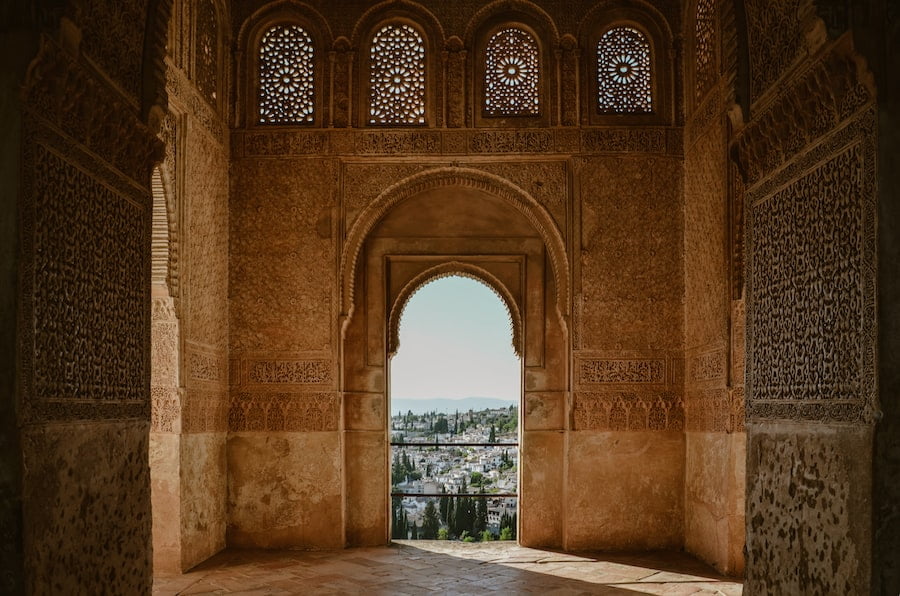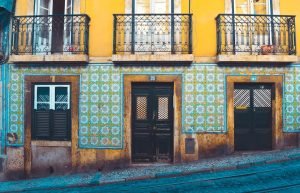
Portimao’s f1 legacy
Portimao, a coastal city in Portugal’s Algarve region, has become a significant Formula 1 racing destination in recent years. This development is due to several
Portimão, a coastal city located in the Algarve region of Portugal, is known for its rich history and cultural heritage. The city’s Moorish legacy is particularly significant, as it played a crucial role in shaping the architecture, agriculture, trade, and cultural traditions of the region. The influence of the Moors, who ruled over the Iberian Peninsula for centuries, can still be seen in the city’s buildings, art forms, and religious practices. In this article, we will explore the Moorish legacy of Portimão and delve into its historical context, architectural features, impact on agriculture and trade, cultural heritage, religious traditions, and the challenges and opportunities for preserving this legacy for future generations.
Before the arrival of the Moors, Portimão had a rich history that dates back to ancient times. The region was inhabited by various civilizations, including the Romans and Visigoths. The Romans recognized the strategic location of Portimão, situated on the banks of the Arade River and close to the Atlantic Ocean. They established a thriving trading hub in the area, taking advantage of its natural harbor and fertile lands.
During the Visigothic period, Portimão continued to flourish as a center of trade and commerce. However, this era came to an end with the Islamic conquest of the Iberian Peninsula in the 8th century. The Moors brought with them a new culture and architectural style that would leave a lasting impact on Portimão.
The Islamic conquest of the Iberian Peninsula began in 711 when Muslim forces led by Tariq ibn Ziyad crossed over from North Africa into Spain. Over the next few decades, they gradually expanded their territory, establishing the Al-Andalus region, which encompassed much of modern-day Portugal and Spain.
Portimão, located in the Algarve region, became an important stronghold for the Moors. Its strategic location allowed them to control trade routes and maintain a strong presence in the region. The Moors brought with them a rich cultural heritage, including their language, religion, and architectural style.
One of the most distinctive features of Portimão’s Moorish legacy is its architecture. Moorish buildings in Portimão are characterized by their intricate geometric patterns, decorative tiles, and use of local materials such as limestone and clay. These architectural features can be seen in both religious and secular buildings.
Notable examples of Moorish architecture in Portimão include the Alvor Castle and the Mosque of Portimão. The Alvor Castle, located on a hill overlooking the city, was originally built by the Moors in the 8th century and later expanded by the Christians. It is a prime example of Moorish military architecture, with its defensive walls and towers.
The Mosque of Portimão, also known as the Great Mosque of Portimão, was built by the Moors in the 8th century and later converted into a church after the Christian reconquest. It is one of the oldest surviving mosques in Portugal and showcases the unique blend of Moorish and Christian architectural styles.
The Moors brought with them advanced agricultural techniques and introduced new crops to the region. They cultivated almonds, figs, citrus fruits, and introduced irrigation systems to improve crop yields. These innovations had a significant impact on Portimão’s agriculture, making it a prosperous region known for its fertile lands.
In addition to agriculture, trade also flourished under Moorish rule. Portimão’s strategic location on the coast and its well-developed harbor made it an important center of trade and commerce. The Moors established trade routes with other parts of the Mediterranean, Africa, and the Middle East, bringing goods such as spices, silk, and ceramics to the region.

The Moorish legacy of Portimão is not limited to architecture and agriculture. It also encompasses a rich cultural heritage that is celebrated through traditional music, dance, and art forms. The Moors brought with them their own musical traditions, which blended with local Portuguese influences to create unique melodies and rhythms.
Fado, a traditional Portuguese music genre known for its melancholic melodies and poetic lyrics, has its roots in Moorish music. The influence of the Moors can also be seen in traditional dance forms such as the “Baile Mandado,” which incorporates elements of Arabic dance.
Artistic traditions influenced by Moorish culture can be seen in the intricate tile work and decorative motifs found in Portimão’s buildings. These decorative elements often feature geometric patterns and floral designs, reflecting the influence of Islamic art.
Religion played a central role in Moorish culture and had a significant impact on the development of Portimão’s religious traditions. The Moors brought with them Islam, which became the dominant religion in the region during their rule.
The Mosque of Portimão, mentioned earlier, is a testament to the importance of religion in Moorish culture. It served as a place of worship for Muslims during the Moorish era and was later converted into a church after the Christian reconquest. Today, it stands as a symbol of religious tolerance and coexistence.
Another notable religious site in Portimão is the Church of Our Lady of Conception. Built on the site of a former mosque, it showcases the blending of Moorish and Christian architectural styles. The church is a testament to the religious diversity and cultural exchange that took place during the Moorish era.
The Moorish era in Portimão came to an end with the Christian reconquest of the Iberian Peninsula. Over several centuries, Christian forces gradually pushed back the Moors, reclaiming their territories. In 1249, King Afonso III of Portugal conquered Portimão, bringing an end to Moorish rule in the region.
Despite the end of Moorish rule, their legacy continued to shape Portimão and the wider Algarve region. The architectural style, agricultural practices, and cultural traditions introduced by the Moors remained an integral part of the region’s identity.
For tourists interested in exploring Portimão’s Moorish legacy, there are several notable sites that are open to visitors. The Alvor Castle, with its commanding views of the city and surrounding countryside, is a must-visit for history enthusiasts. The castle offers a glimpse into the military architecture of the Moors and provides insight into their strategic importance in the region.
The Mosque of Portimão, now known as the Church of Our Lady of Conception, is another site worth visiting. Its unique blend of Moorish and Christian architectural styles is a testament to the region’s religious diversity and cultural exchange.
Preserving Portimão’s Moorish legacy poses several challenges, particularly in the face of rapid urban development and increasing tourism. The pressure to accommodate growing numbers of visitors can sometimes lead to the neglect or destruction of historical sites.
However, there are also opportunities for the future. Sustainable tourism practices can help minimize the impact on historical sites and ensure their preservation for future generations. Additionally, the development of cultural education programs can help raise awareness about the importance of Portimão’s Moorish legacy and foster a sense of pride and ownership among local communities.
In conclusion, Portimão’s Moorish legacy is a testament to the rich history and cultural heritage of the region. The influence of the Moors can be seen in the city’s architecture, agriculture, trade, cultural traditions, and religious practices. Preserving this legacy for future generations requires a careful balance between tourism and conservation efforts. By recognizing the significance of Portimão’s Moorish heritage and taking steps to protect it, we can ensure that this important chapter in history continues to be celebrated and appreciated.
If you’re interested in uncovering the rich history of the Moorish legacy in Portimão, you might also enjoy reading this related article: “The Story of Dr. Glynn Ryland: Our First CoCreate Member.” Dr. Ryland’s fascinating journey through the 8th to 12th centuries sheds light on the cultural and architectural influences left behind by the Moors in this enchanting Portuguese city. Discover how his research and discoveries have shaped our understanding of this captivating period in history. Read more

Portimao, a coastal city in Portugal’s Algarve region, has become a significant Formula 1 racing destination in recent years. This development is due to several

The Algarve region in Portugal is renowned for its diverse attractions, including its flourishing wine industry alongside its famous beaches and scenic landscapes. The area’s

Portugal’s public transport system is an efficient and convenient way to explore the country. With a variety of modes of transportation available, including metro, tram,
CoCreate Coworking
R. da Porta de São João 17,
8500-604 Portimão
Algarve, Portugal
Monday – Friday: 9:00 – 17:00
Saturday – Sunday: Closed